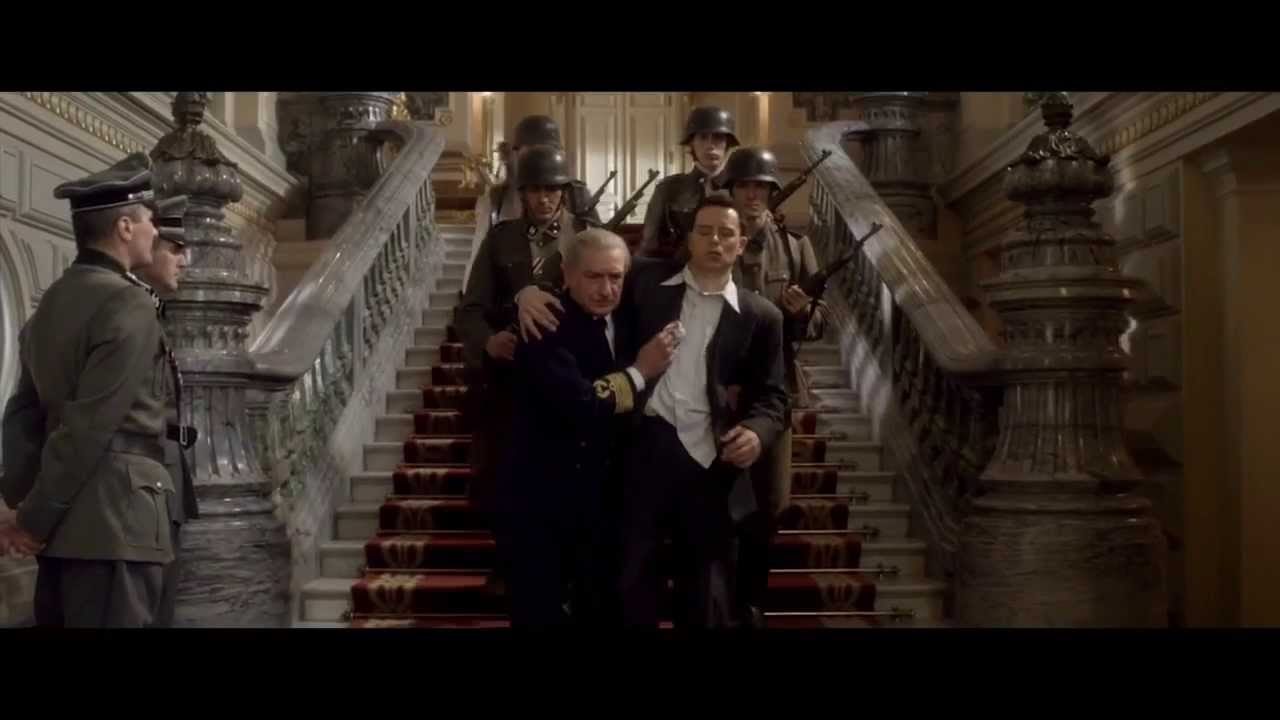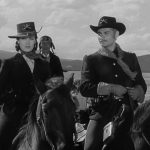🎬 Walking with the Enemy (2014)

Walking with the Enemy (2014): A Heartfelt and Tense Tale of Survival During WWII
Walking with the Enemy (2014), directed by Mark Schmidt, is a historical war drama that explores the harrowing journey of a young Hungarian man during the final years of World War II. The film tells the true story of the Hungarian resistance and one man’s courageous efforts to protect his loved ones and fight back against the brutal Nazi occupation. A gripping tale of love, betrayal, and survival, Walking with the Enemy is a poignant reminder of the strength of the human spirit in the face of unspeakable adversity.
Plot Overview: A Story of Love, Identity, and Resistance
Set in 1944, Walking with the Enemy follows the life of Elek Cohen (played by Jonas Armstrong), a young Hungarian man whose world is turned upside down as the Nazis invade Hungary and begin to round up Jews. As the brutality of the occupation increases, Elek finds his family and community in danger of deportation to concentration camps. When his family is captured, Elek is left to fend for himself and seek refuge in a dangerous and unpredictable world.
The film portrays Elek’s transformation from an innocent young man to a determined and resourceful fighter who will do whatever it takes to protect the people he loves. Disguised as a Nazi officer, Elek infiltrates the German forces in order to save his family and resist the horrors of the occupation. Along the way, he forms unlikely alliances with other resistance fighters and navigates a treacherous landscape of deception, survival, and sacrifice.
Walking with the Enemy also delves into Elek’s internal struggle as he grapples with the moral complexities of his actions. As he lies to protect his family and others, he must confront the human cost of his decisions and the difficult choices he must make in order to stay alive. The film highlights the emotional toll of living in constant fear and the difficult decisions people are forced to make in wartime.
Themes: Survival, Identity, and Moral Dilemmas
At its core, Walking with the Enemy is a film about survival. Elek’s journey is one of self-discovery as he navigates a world filled with danger and uncertainty. His transformation from a young man seeking safety to a resolute fighter is a central theme, reflecting the harsh realities of war and the resilience of the human spirit. The film captures the emotional and physical toll of survival during one of the most dangerous and brutal periods in history.
Identity plays a crucial role in the narrative, as Elek must conceal his true heritage to avoid detection by the Nazis. His choice to adopt the identity of a German officer is a matter of life and death, and the film explores the psychological and emotional burden that comes with constantly pretending to be someone he is not. The tension between his true self and the false persona he must adopt is a key element that adds depth to his character.
Another significant theme is the moral dilemma faced by those who are caught in the web of war. Elek is forced to make difficult decisions, often compromising his values to protect his loved ones. The film explores how survival in such dire circumstances requires individuals to question their sense of right and wrong, ultimately highlighting the blurred lines between good and evil in a time of extreme hardship.
Character Development: Elek’s Courage and Growth
- Jonas Armstrong as Elek Cohen: Jonas Armstrong gives a standout performance as Elek Cohen, a young man who must come to terms with the harsh realities of war while trying to maintain his humanity. Armstrong effectively conveys the emotional and psychological weight of Elek’s journey, showing the internal struggle he faces as he steps into the shoes of a Nazi officer in order to protect his family. Elek’s growth from a naïve, frightened young man into a determined and resourceful fighter is both heartbreaking and inspiring.
- Supporting Characters: The supporting characters in Walking with the Enemy add layers to the story. The film features several individuals who are crucial to Elek’s survival, from resistance fighters to civilians, each with their own motivations and struggles. The relationships between these characters emphasize the themes of loyalty, trust, and sacrifice. As Elek forms bonds with these individuals, the film explores the power of human connection in the face of unimaginable evil.

Cinematography: Capturing the Tension of War
The cinematography in Walking with the Enemy is haunting and evocative, using visuals to immerse the audience in the tumultuous atmosphere of wartime Europe. The film captures both the beauty and the brutality of Hungary during World War II, from the serene landscapes to the war-ravaged cities. The contrast between these two elements serves as a powerful reminder of the destruction wrought by the Nazis.
The film’s use of light and shadow is particularly effective in emphasizing the tension and danger that permeate Elek’s journey. The moments of quiet reflection are juxtaposed with the intense action sequences, creating a stark contrast that adds emotional weight to the story. The camera work is intimate, focusing on the characters’ faces to capture their internal struggles, while also pulling back to showcase the broader scope of the war and its devastating effects on the world.
Historical Accuracy: A Depiction of Hungary’s Nazi Occupation
Walking with the Enemy is based on real events, and the film makes a concerted effort to stay true to the historical facts surrounding the German occupation of Hungary. While some elements of the film have been dramatized for narrative purposes, the film provides an authentic portrayal of the struggle faced by Hungarian Jews and resistance fighters during World War II. The film sheds light on a lesser-known chapter of the Holocaust, focusing on the experiences of the Hungarian people under Nazi control.
The film also highlights the complex relationship between Hungary and Nazi Germany, depicting the political intrigue and resistance efforts that took place within the country. The portrayal of the Hungarian resistance is an important aspect of the film, showcasing the bravery and ingenuity of those who fought back against the Nazis.
Critical Reception: Praised for Its Emotional Depth and Realism
Walking with the Enemy has received mixed to positive reviews for its emotional depth and historical accuracy. Critics have praised the film for its strong performances, particularly that of Jonas Armstrong, who is lauded for his portrayal of Elek. The film’s ability to depict the internal and external struggles of its characters has been highlighted as one of its strongest aspects.
The film has also been praised for its realistic portrayal of wartime Hungary and the moral dilemmas faced by those living under Nazi occupation. However, some critics have noted that the pacing of the film could be slower at times, and that certain dramatic moments may feel a bit heavy-handed. Despite this, the overall reception has been positive, with many appreciating the film’s respectful handling of a difficult historical subject.
Final Thoughts: A Powerful and Emotionally Resonant War Drama
Walking with the Enemy (2014) is a compelling war drama that captures the personal cost of survival and resistance during World War II. Through the story of Elek Cohen, the film provides a heartfelt portrayal of love, sacrifice, and moral struggle in the face of Nazi occupation. With strong performances, a poignant narrative, and a focus on historical accuracy, Walking with the Enemy offers a touching tribute to the resilience of those who fought for freedom during one of the darkest periods in history.











